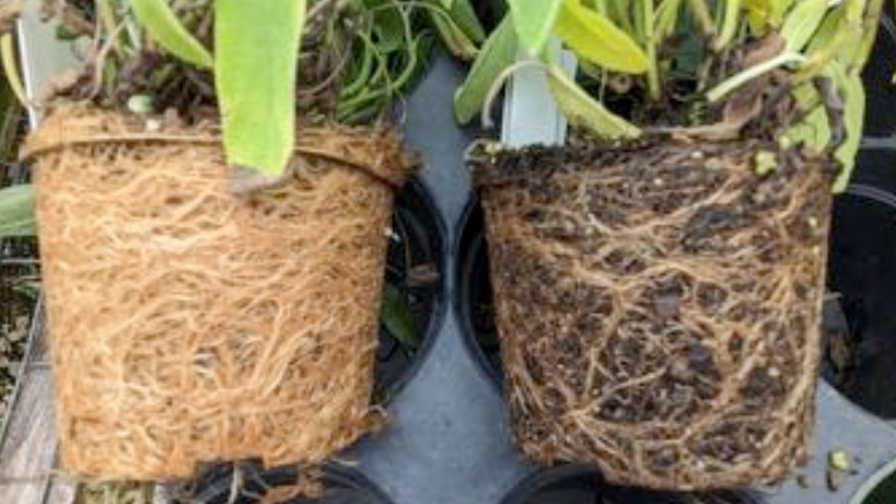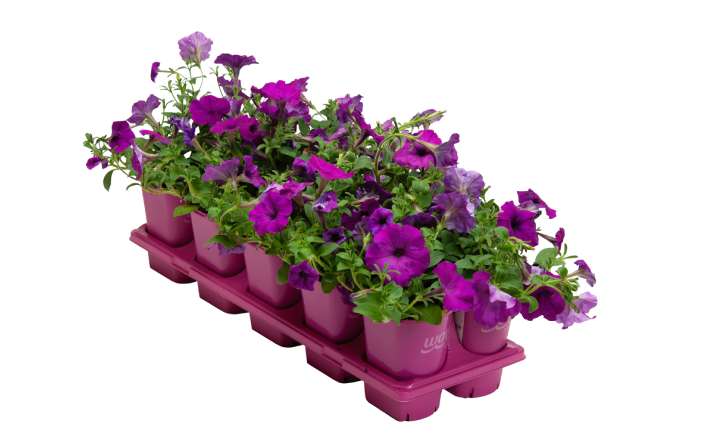Why Alternate Substrates Require Altered Growing Practices

Root rot will often be observed as brown roots (right) and shoot wilt however the substrate will still be saturated due to lack of uptake. Nice healthy roots are visible on the plant at the left. Photo: Brian Whipker
In recent years, substrate availability has been impacted due to weather and economic concerns. As a result, substrate companies are incorporating new components into traditional soilless growing media. Some of these alternative substrate components include coconut coir and wood fiber. While this alleviates the substrate shortages, these media components have very different physical and chemical properties compared to peat. While these new components take the place of peat in the growing media, they may not be direct replacements but instead are alternatives that may take some trialing to learn to master growing in them.
In a recent e-GRO alert, Brian Whipker and Patrick Veazie of North Carolina State University note that changes in substrate physical properties can result in poor crop growth if one does not adapt their growing practices to the new attributes of the substrate. One of the most common problems observed for growers who are changing to coir or wood fiber amended substrates is overwatering. Wood and coir additions can change the water capacities of the substrates. Wood fiber is more hydrophilic compared to peat, it will also dry faster than peat at the surface. In many cases growers will water when surface drying of the substrate is observed; however, the rest of the substrate is still saturated.
Growers should check the watering needs of the pot based on the moisture of the entire profile instead of only the visual appearance of the surface. Picking up the pot to determine if it heavy is a great method to check the water status of the plant. When the substrate is continually overwater, negative impacts on plant growth may be observed in a variety of ways including plant growth stalling, iron deficiency, and changes in substrate pH.
For more information, including the symptoms of overwatering, and how moving to alternative substrates brings inherent changes to substrate chemical properties, check out the original e-GRO alert here.









